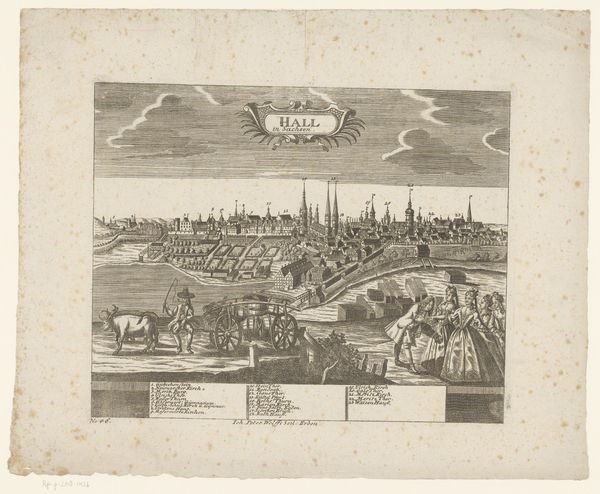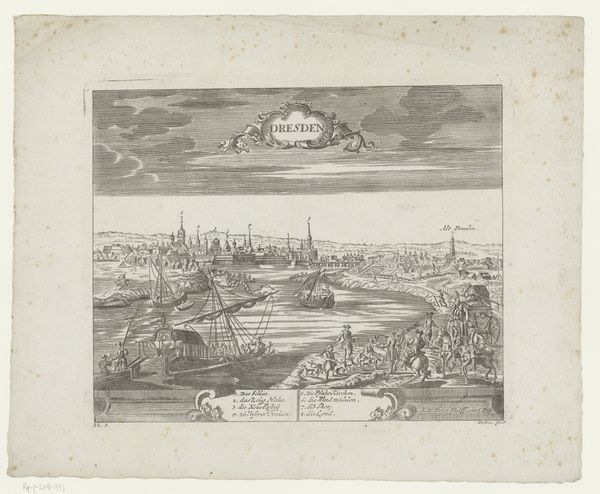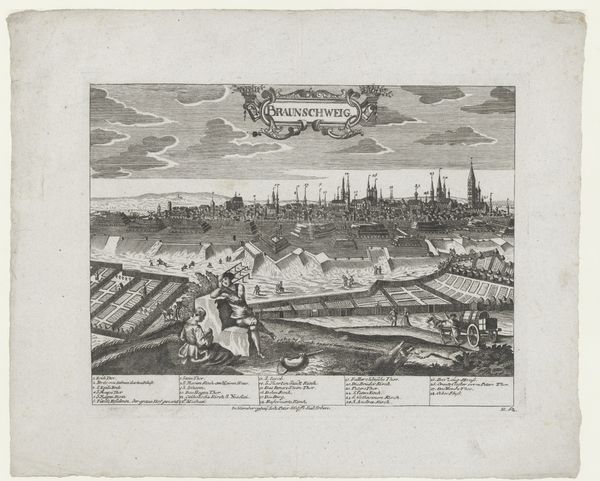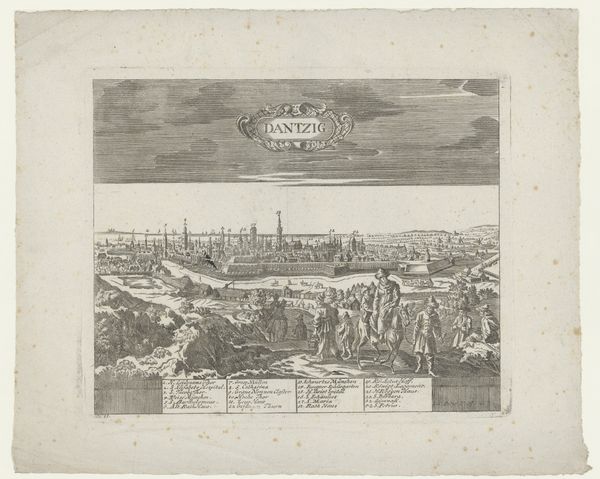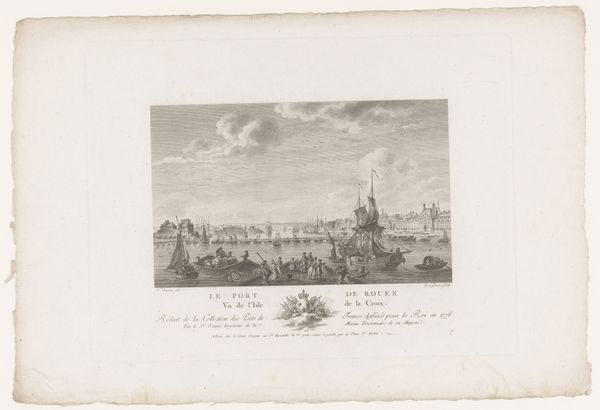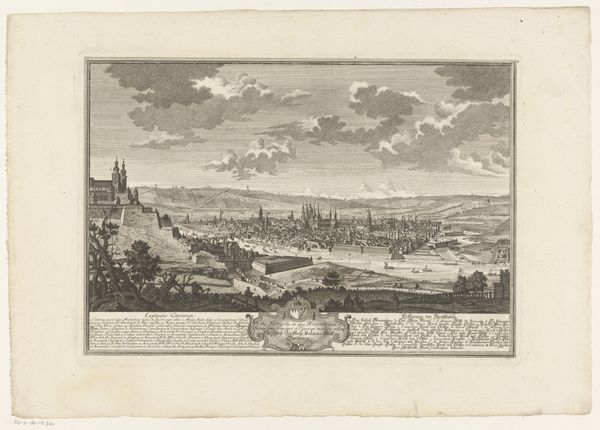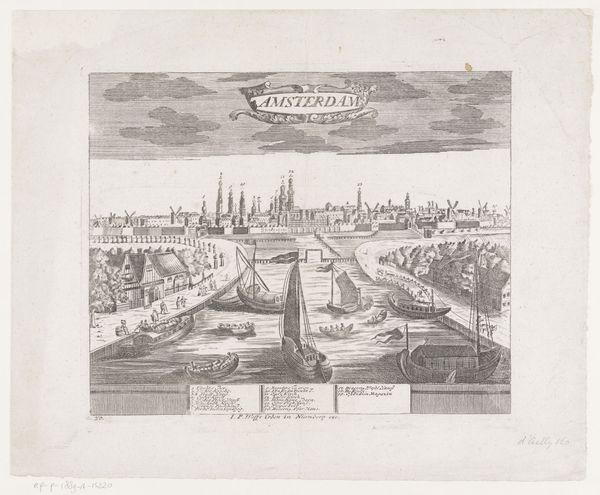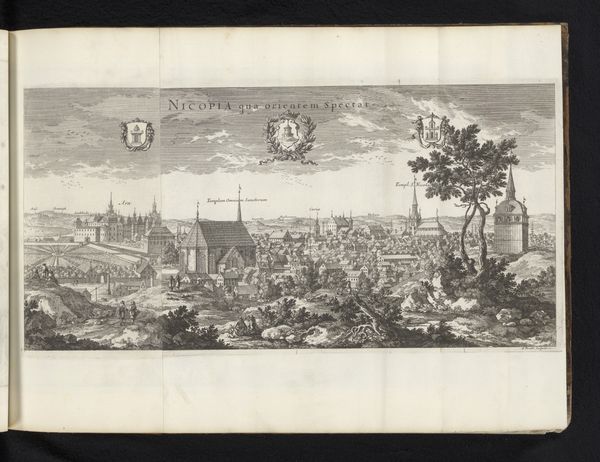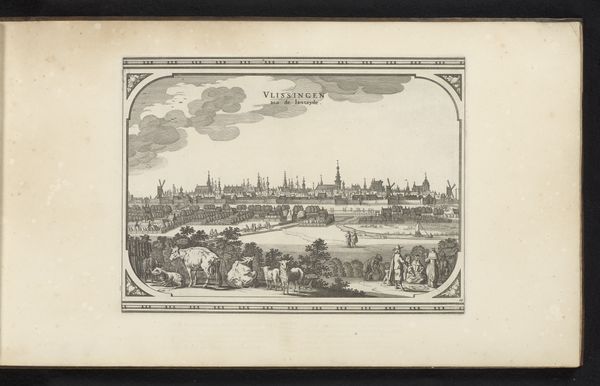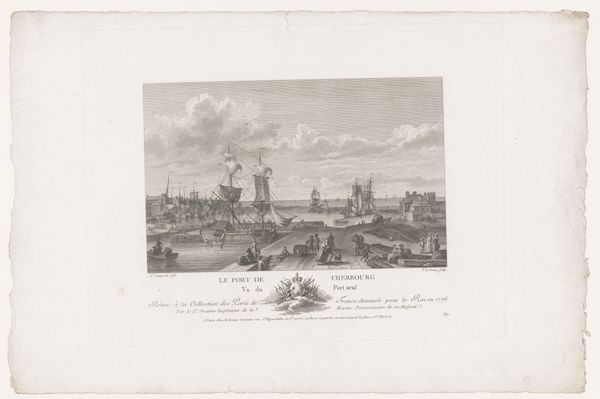
print, engraving
#
medieval
# print
#
landscape
#
geometric
#
line
#
cityscape
#
history-painting
#
engraving
Dimensions: height 275 mm, width 352 mm
Copyright: Rijks Museum: Open Domain
Editor: Here we have a print entitled "Gezicht op Wolfenbüttel," made after 1711 by an anonymous artist. It looks to be an engraving. The intricate linework and geometric structures are captivating. What strikes you about this cityscape? Curator: Note the organizational strategy. The foreground elements, the rolling hills and figures, function almost as a repoussoir, directing the viewer’s gaze towards the receding geometric complexity of Wolfenbüttel itself. How do the lines contribute to the illusion of depth and space? Editor: I see that! The lines are denser in the foreground, creating contrast, and thinner in the distance, suggesting atmospheric perspective. It's very effective. The geometric shapes create order, but are there implied shapes as well? Curator: Precisely. Consider the careful orchestration of forms. Do you observe how the artist manipulates linear perspective not merely to replicate reality but also to structure the image, imposing a particular order and legibility? Editor: I do, especially in the walled fortifications, directing your eye. Do you think this piece would hold similar meaning if it were say, a painting, versus an engraving? Curator: A key distinction is the mechanical nature of engraving. The repeatable, precise lines are a conscious choice to create clarity. A painting, with its potential for textural nuances, would convey a different structural logic. Editor: That's fascinating; the medium is really integral to its meaning. Thanks for your insights! Curator: My pleasure. Reflecting upon these structures offers ways to examine an artwork beyond its historical setting.
Comments
No comments
Be the first to comment and join the conversation on the ultimate creative platform.

